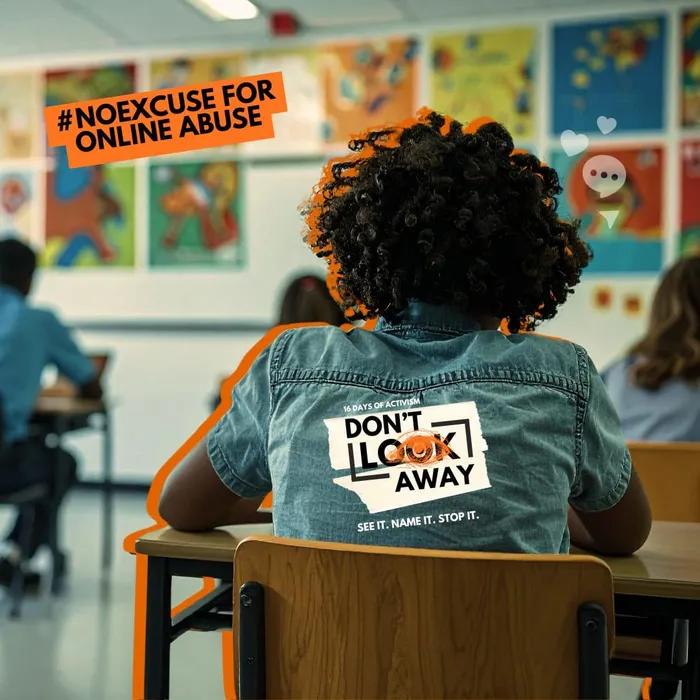Don't Look Away | How schoolyard bullying still breaks futures

Schoolyard bullying leaves invisible scars that follow learners every day.
Image: IOL
Bullying in South African schools may look different in every classroom, but its impact is painfully consistent: fear, silence, and dreams quietly shrinking.
For many children, the schoolyard, the place meant to nurture confidence and curiosity, becomes a battleground they walk into five days a week.
In one of the most disturbing recent cases, a 16‑year-old Grade 10 learner at Milnerton High was reportedly assaulted by a group of older boys. A video of the attack, which allegedly took place on October 2025 went viral.
In the footage, the victim is shown being struck by multiple attackers armed with belts, a wooden log or stick, hockey sticks, even a hosepipe. Despite his pleas for the attack to stop, the beating continues while other learners stand by and laughing.
The incident sparked outrage, but teachers say it is only a glimpse of the ordinary cruelty many learners face away from cameras.
Norman Henshilwood, principal of Jawaad Holland High School, explains the differences in bullying across age groups.
“In primary schools, bullying tends to be more direct, physical pushing, name-calling, and exclusion from friendship groups. In high schools, it becomes more subtle and sophisticated. Rumours, intimidation, isolation, and social media harassment are much more common.”
The provincial education authorities publicly condemned the violence, calling it unacceptable and emphasising that schools must be safe spaces.
The case triggered renewed calls for stricter enforcement of safety protocols and greater community involvement to prevent violence and bullying in schools.
Clinical psychologist Dr Reitumetse Mashego says that a day at school for a child experiencing bullying can be overwhelming and emotionally draining. Anxiety, fear, and isolation dominate their experience.
"Over time, this can affect sleep, eating, academic performance, and even interactions at home,” said Dr Mashego.
South African schools often have anti-bullying policies, but enforcement can vary.
“Our Anti-Bullying Policy aligns with WCED guidelines,” Henshilwood explains.
“It’s effective when parents, teachers, and learners engage consistently. Problems arise when incidents go unreported or when interventions are delayed.”
This aligns with national expectations set by the South African Council for Educators (SACE).
“SACE has the Code of Professional Ethics, which guides teachers towards their expected conduct,” SACE Communications Manager Risuna Nkuna said.
The incident traumatised the learner: he refused to return to school afterwards, telling his mother he didn’t want to be “the laughing stock.”
After a protest by other learners at the school, the education department moved him to another school, though his mother warned that the transfer was far from home and created financial hardship.
Dr. Mashego stresses that intervention must be holistic.
“South African schools need a balance between zero-tolerance for inaction and developmental approaches. Integrated strategies with education, social services, and mental health support are essential. Victims should receive continuous support, and bullies should be guided or disciplined fairly and consistently.”
Experts emphasise that tackling bullying cannot fall on teachers alone. Peer bystanders, families, and school governing bodies all play a role.
Henshilwood says learners must feel safe reporting incidents, and schools must consistently act. Bullying cannot be tolerated, and our response must be visible and fair.
“Intervention cannot be overstated. Bullying can have life-altering consequences. In extreme cases, it can push vulnerable children to desperate actions. Prevention, early intervention, and ongoing support are not optional, they are vital,” said Dr. Mashego.
The Department of Basic Education (DBE) has urged stakeholders, including parents, SGBs, educators, learners and government officials, to unite against bullying to create safe, learning‑friendly environments.
The Department’s National School Safety Framework (NSSF) provides guidance for identifying and managing safety threats, establishing safety committees, and ensuring that classrooms can function without interruption.
Director for School Safety Mr Paseka Njobe highlighted the importance of early reporting.
“Learners must immediately report early warning signs and threats of bullying to their teachers or School Management Team and should keep record of recurring incidences. In the case of cyberbullying, learners should notify their parents or any trustworthy adult.”
He emphasised that schools are provided with confidential reporting systems linked to SAPS and that teachers are trained to prevent, manage, and respond to all forms of bullying.
Experts agree that while policies matter, culture change is key. Creating safe spaces, educating learners about empathy and consequences, and fostering community accountability are essential steps.
“Bullying is never just a playground problem,” Henshilwood said.
“It is a social and psychological issue that affects every aspect of a child’s life. Schools must stop looking away, and as a society, we must commit to protecting every learner.”
IOL News
Related Topics: